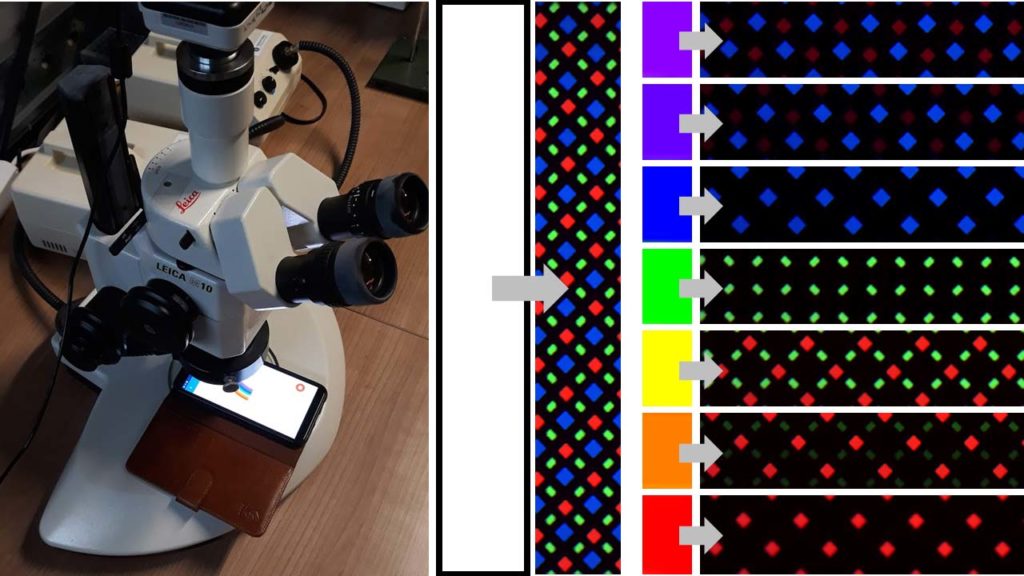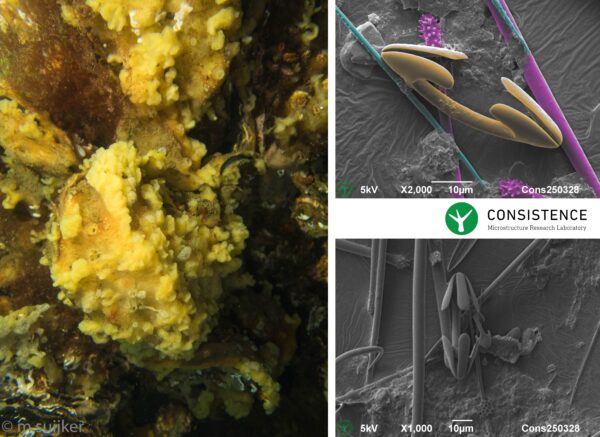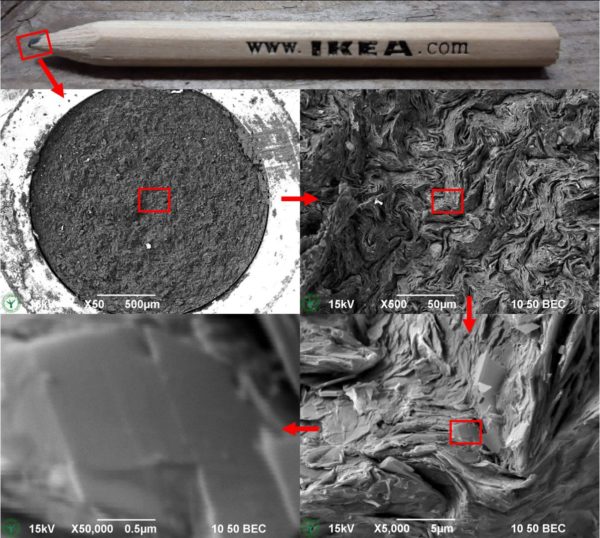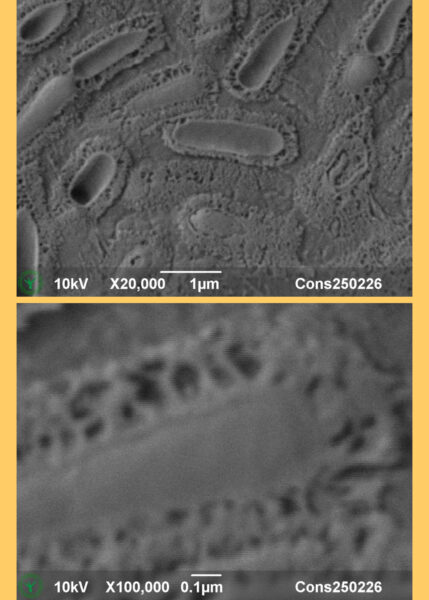This post is about the amazing beauty of the rainbow, white light, mobile phone screens, … and ‘regular’ stereo light microscopy.

To start with the last: a Stereo Microscope (or macroscope) is a sophisticated magnifiying glass. It allows to visualise details of objects that are below the visibility threshold of the naked eye.
Now the phone screen: If viewed under the stereo microscope, a white area on the screen reveals a black background and red, blue, and green (x2) squares. The coloured squares are individual led lamps. These lights are so bright that the black background disappears when viewed with the naked eye.
The coloured squares repeat every 125 micrometer and that is small enough to give the eye and the brain the illusion of a perfect white colour, even though the separate lights are red, blue, and green.
Last but not least the rainbow: Every colour can be represented by the red, blue, and green lights, by applying different brightness to the different colours, as can be seen in the image. And if all lights are dimmed, still in the same colour balance, the colour will show less bright. In the same way, white will turn to grey if red, blue, and green are dimmed simultaneously.
Hope you enjoyed his short phone-screen-magnification session. And did you know that newspaper images also consist of coloured dots? Not Red, Green and Blue on a black background, but Cyan, Magenta and Yellow on a white background.
There is a lot more to share about microscopy, so stay connected with Consistence!



